Product-led content weaves your product into the narrative to solve a problem.
It's created in a helpful, high-converting sweet spot. Right in the middle of your target customer's needs and your product value.
In this interview (How SEO helped Supermetrics grow to $50m ARR), Edward Ford noted how important product-led content was:
“If someone was searching for 'How to get Facebook ad data into a spreadsheet'. They’re not indicating any intent to buy Supermetrics. But our product could actually solve their problem easily, and, in turn, the content could generate demand for us.”
For this week's How the F*ck Premium article, I've pulled out the step-by-step guide for creating product-led content.
I'll use Supermetrics' best practices—and a teardown of a real piece of content of theirs.
In this article:
- Identifying common customer challenges
- Conducting keyword research to find product-led search terms
- How to actually write the article without putting off the reader
- Why writing from experience is so important
- How to choose the right freelancers for you
- Final top tips
5 Steps to Creating Content That Drives Signups in a Product-Led Company
1. Learn the common challenges customers have
Step one, as with most great marketing, is to understand what problems customers are facing.
List these out:
- What are all the different ways your customers are using your product right now?
- What are your top personas, and what challenges do they face every day that your product could solve?
There's no substitute for talking to customers and deeply understanding their needs, daily tasks, goals, and aspirations.
Here's a quick template from our other article on Jobs-to-be-Done where we look at a few more examples of product-led content:
2. Keyword research to find what people are actually searching for
Keyword research is where you find out how big an issue those problems are (in terms of search volume).
Let's say you're a data product like Supermetrics and your target customers are marketers.
You've identified three things they do each day when it comes to data:
- Search traffic performance reporting
- Facebook ad performance reporting
- Social media performance reporting
Your product helps with all three in a specific way: it has a neat integration that helps export the data from these tools and put them in an Excel spreadsheet.
That's your sweet spot. Now we can start doing keyword research.
Head over to your keyword research tool of choice and test out some relevant terms:

Navigate to keyword ideas > matching terms and filter on terms that include "how".

There are tons of ways to dig into keywords (eg. variations of the word 'reporting', subtopics, types of reporting), but one idea has clearly presented itself here: "How to do SEO reporting".
If you write this how-to guide, you'll be:
- Writing for someone with the right problems
- Winning a reader who could benefit from using your software
This means you're gaining an audience with a strong chance of converting into a user.
A real example of how-to content that converts (by Supermetrics)
Here's a real example from Supermetrics.
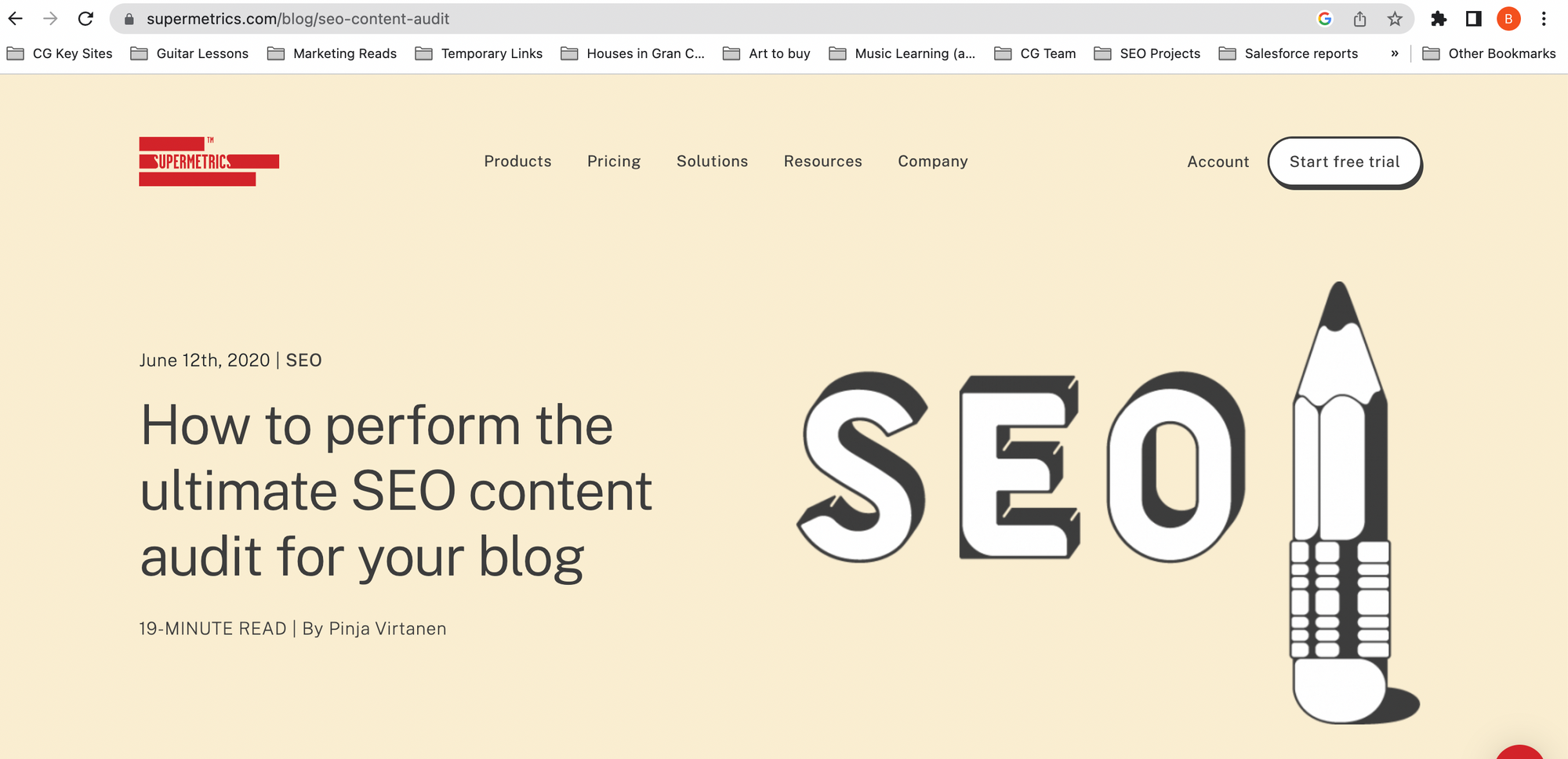
Topic: How to perform the ultimate SEO content audit for your blog
Keyword: SEO content audit (1.3K global monthly volume)
Product-customer alignment: Supermetrics saves marketers time by helping get organic traffic data into a spreadsheet in seconds.
3. How to *actually* write how-to content that converts
The Supermetrics article begins with a section we're all familiar with. But, kudos to them, it's done slightly better than usual.
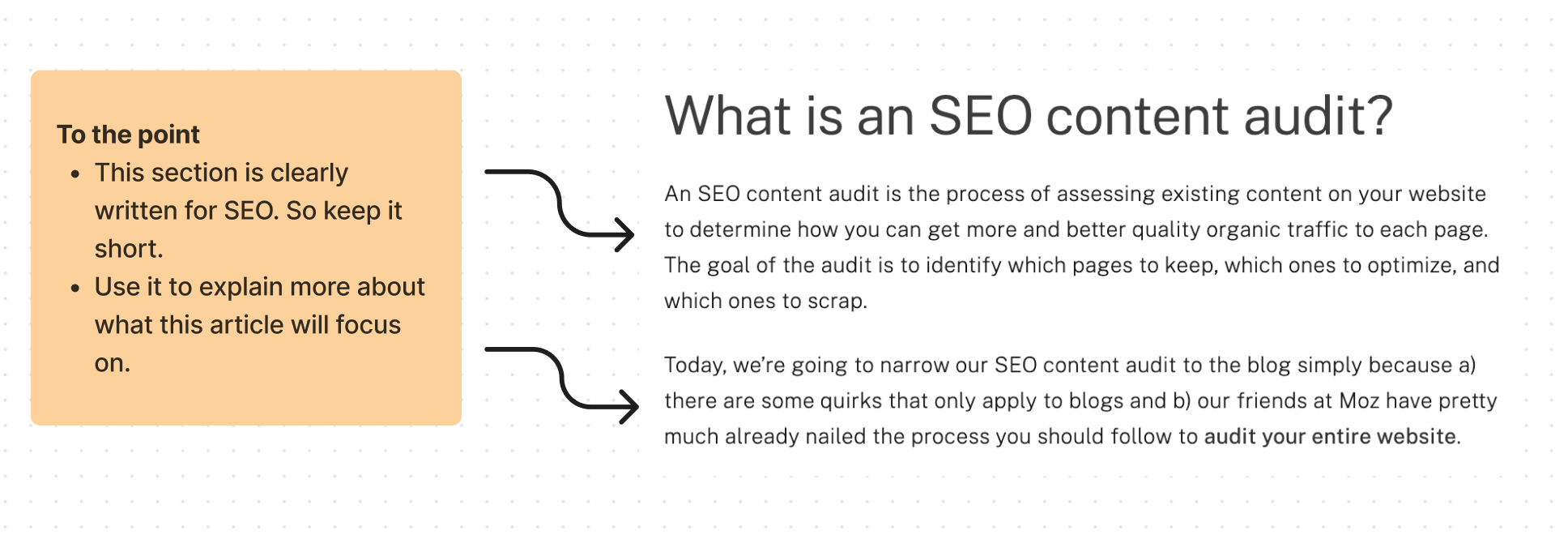
After some more pre-amble, we get to step one in the guide. They come straight in with the product here.
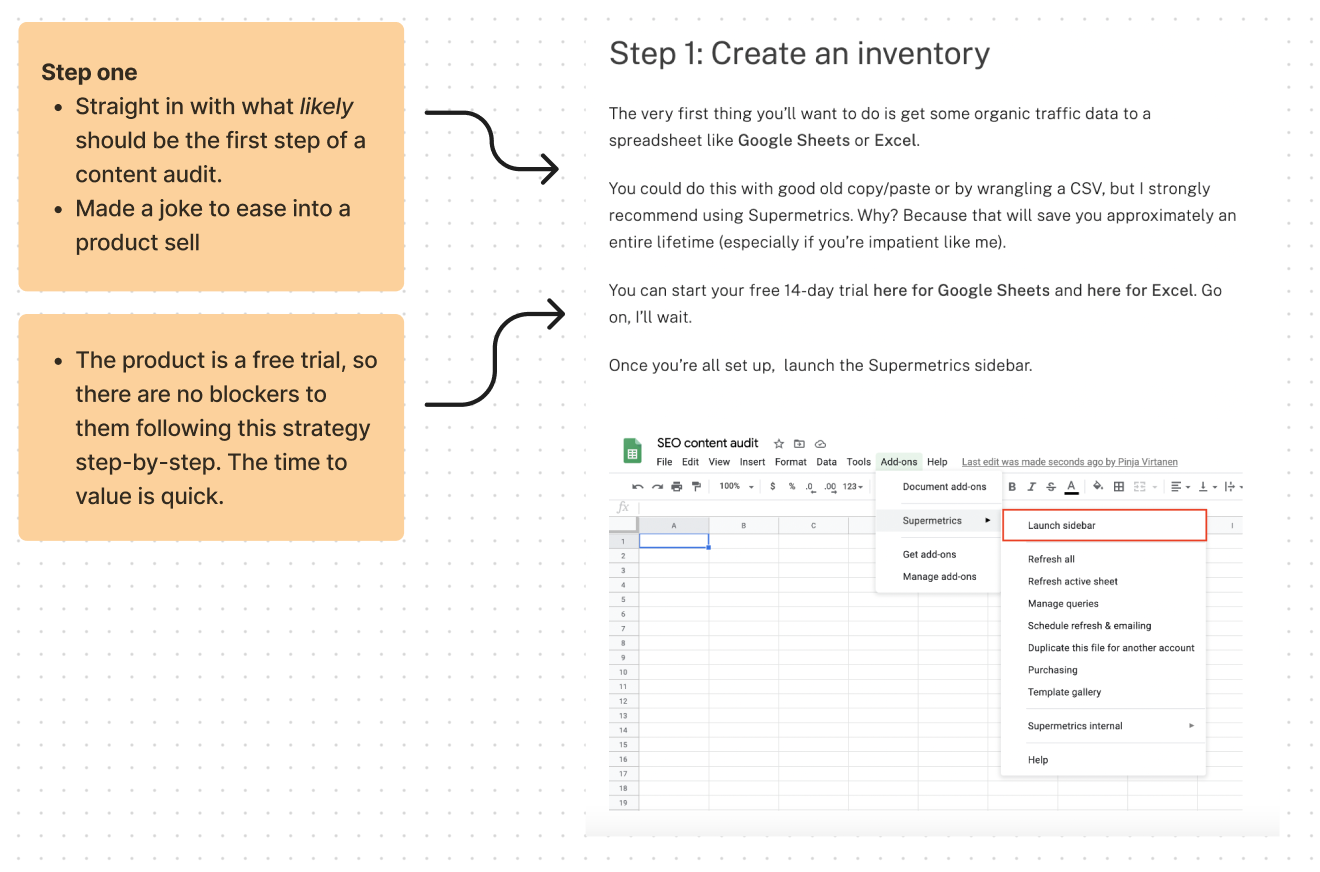
Product-led content works particularly well when you're a product-led growth company. When you have a free trial and a simple sign-on process, then becoming a user isn't a blocker to getting value from the content.
That time to value is unparalleled. If you're a non-free, high ACV SaaS product then I wouldn't recommend making your product a critical part of the step-by-step guide. That would make your entire guide useless and the reader will bounce.
If you don't have the luxury of a free trial (this has always been me, too, I feel your pain), try to show the reader how they can achieve 'X' with their current tools but softly show them how much easier and more powerful your own solution is.
Next up in the article, the writer here focuses on results. She simply says, here are the results if you use our product.
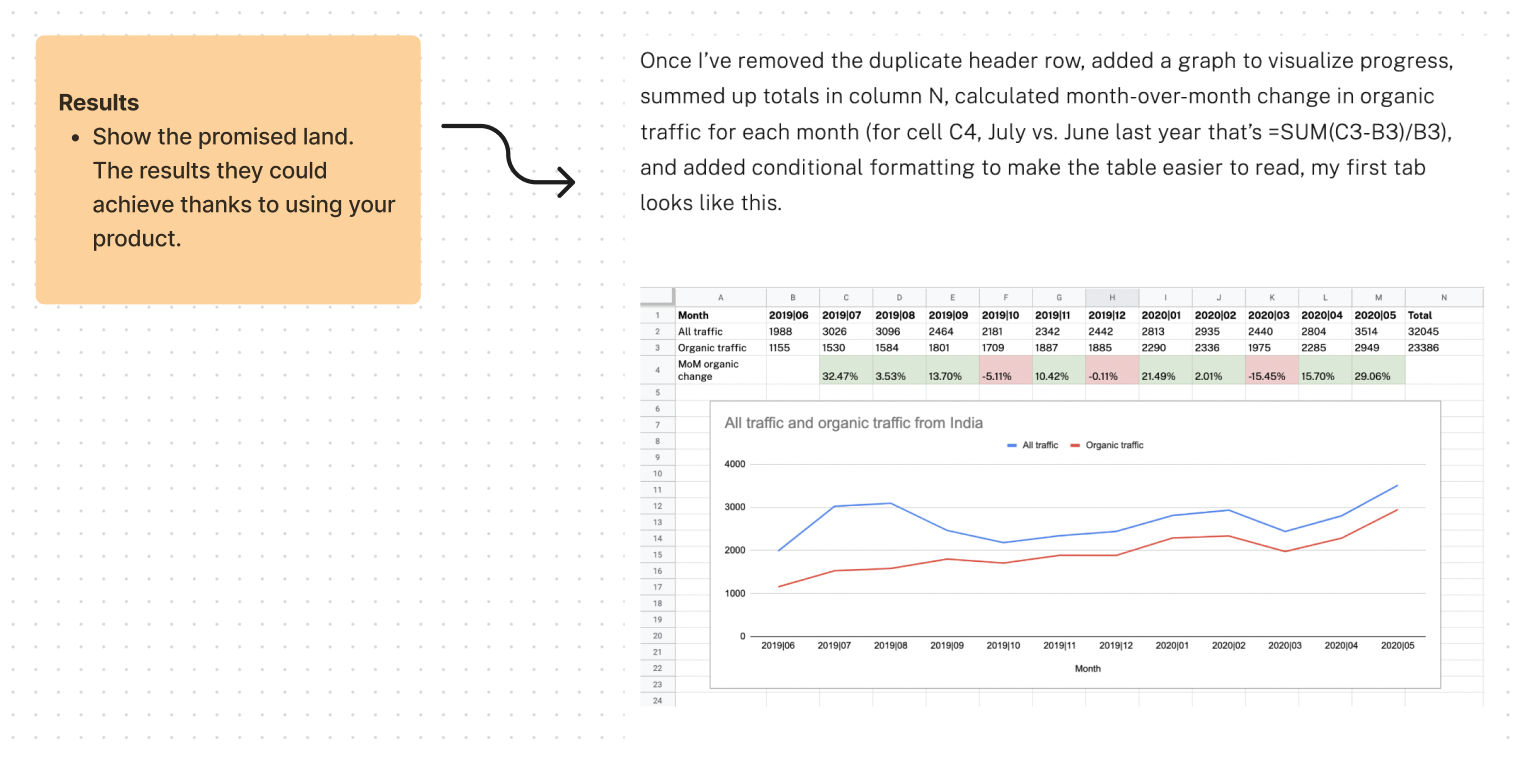
Results are important because they're what the reader really wants. They don't care about the tool, they care about what they can show to their boss.
As the post goes on, the writer introduces more and more ways the product can add value. I think this is smart, starting off with small steps eases the reader in and the increasingly complex parts show off a ton of value.
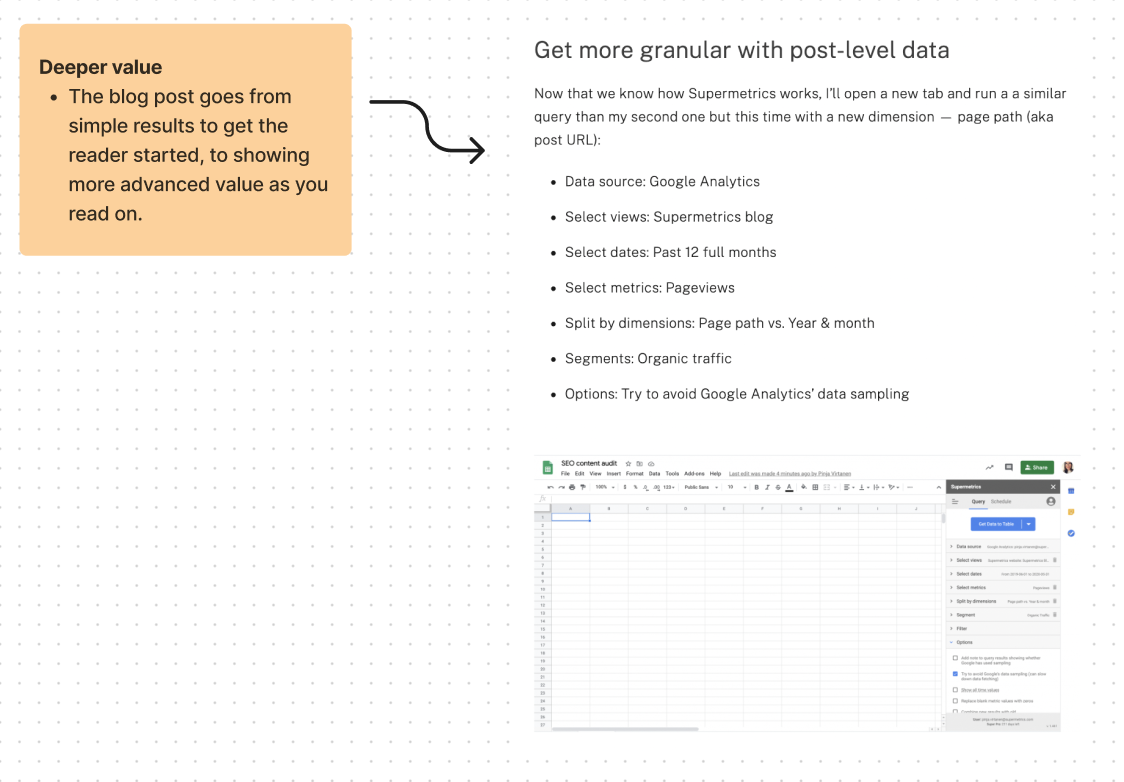
However, one way I would improve this article is by leading with these results. It took us a while to get to the outcome we want to see.
A section at the very beginning with "Here's the final SEO audit result, and now I'm going to show you how to get there" would prevent the reader from nodding off (or skipping ahead).
The next section dives into education on how to categorize your content.
I wasn't expecting this section, honestly.
It's enjoyable and teaches us something we likely didn't know, something that would drive value for the SEO audit outcome.
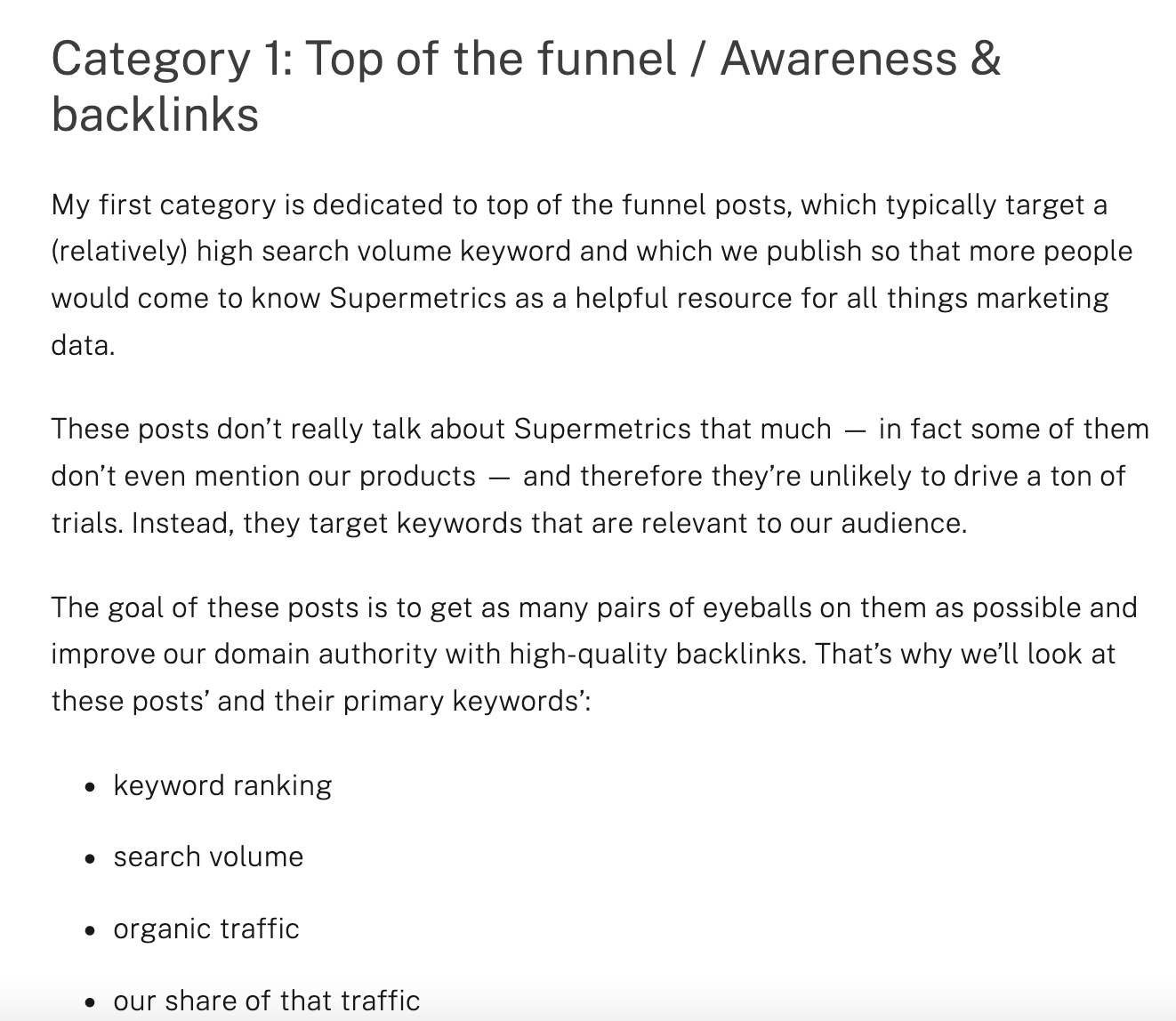
I'd like to have seen more of this early on in the article. I was caught off guard by the change in what had, until now, been a very transactional guide.
The rest of the guide continues in this way. It's much more value-focused now the product has done its part, and the quality dramatically increased as a result.
Here are two more tips from the Supermetrics how-to strategy:
4. Write from experience
One thing that makes Supermetrics' SEO audit article really good is that it's written from experience.
Content marketers are one of their target personas, and this article was written by their own in-house content marketers when documenting their process. She did an actual SEO audit and used their own product to do some of the heavy lifting.
In most industries, one can only dream of that kind of alignment, but there are always opportunities to breathe first-hand experience and expertise into your content.
5. Leverage guest writers and freelancers
To scale up your output you need guest writers and freelancers to help out.
When I talked to Edward from Supermetrics, he gave me two tips:
- Vet guest writers who come inbound for their authority and depth of knowledge on a subject
- Find specialist writers in specific areas of your persona or product value to write the best content. Those who have had the problem themselves are usually the best.
For example, the Supermetrics team moved into the eCommerce data space and began working with Shopify and Clavio.
They had never experienced those products or problems in-house, so they found freelancers who had first-hand knowledge to share their advice and tips.


